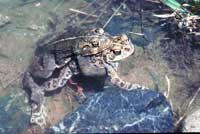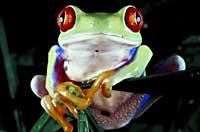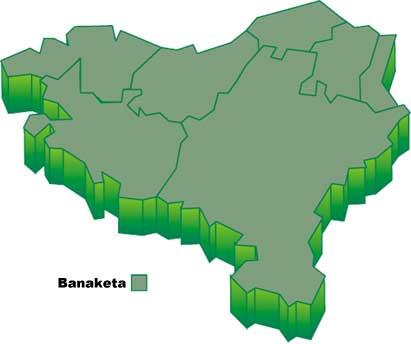Farewell to amphibians?
2001/04/05 Roa Zubia, Guillermo - Elhuyar Zientzia
Look at the general situation. However, local data are also very representative. The area where the Bufo boreas toad lives in western North America is changing. The toad lays the eggs and at first grow properly. But from a moment many eggs peel and die.
Biologists investigating toads have understood that it is the cause of climate change. Climate change has many consequences. One of them is the reduction of the depth of the lakes. As a result, the amount of ultraviolet radiation received by the eggs of the Bufo boreas toad increases and facilitates contamination of microorganisms. For example, infection of the fungus saprolegnia ferax is deadly for eggs.
Scientists have studied many factors to find the origin of the problem. For example, it could be due to the reduction of the ozone layer. However, according to recent studies, the status of toads is due to climate change.

In the last 30 years the temperature has increased. In some areas of the Earth it is a decisive feature, as in the tropical Pacific. Time in many places depends on what happens there. In recent times several factors have been added to this difference. Ecosystems that have been jointly affected by global warming and the El Niño effect are those that perceive change. In addition, they have been ecosystems of all kinds, from coral colonies to humid forests.
The effect of the tropical Pacific has also spread to cold areas and has reduced winter snowfall. Therefore, the water level of the lakes has decreased considerably and mortality in the population of toad Bufo boreas has increased.
These data have also been analyzed in the populations of other amphibians in America. The results are similar. The population is declining dramatically in many species of the Central American mountains, for example.
The recurrent issue in amphibians is the epidemic of microorganism infections. However, scientists consider that the approach to a single disease is a simplification. Microorganisms that contaminate wet skin animals do not affect reptiles. But not only amphibian populations, but also some lizards have declined in these places.
Not all species receive the same effect and, however, the dominant tendency is to reduce the population. The direct relationship of reduction to climate change is not easy due to the many factors involved. However, it is time to clean the atmosphere just in case and not dirty it anymore.

Gai honi buruzko eduki gehiago
Elhuyarrek garatutako teknologia





